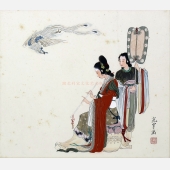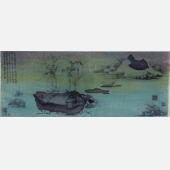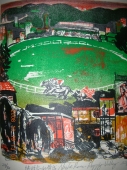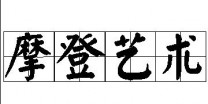- 资质:
- 评分:
1分 2分 3分 4分 5分 6分 7分 8分 9分 10分 7分
- 印象:
- 经营时间:11年
- 展厅面积:30平米
- 地 区:福建-厦门-其他
什么是原创版画作品
Many people are very confused by prints; seeing a print on the wall they do not quite understand what they are looking at. The purpose of this section is to clarify this confusion.
很多人对原创印刷作品都心存困惑;看着一幅墙上的版画,却不能真正理解他们看着的是什么。我们的设置的这一板块的目的就是为了解决大家的困惑。
Much of the problem is due to the word 'print' itself. It can refer to a mechanically created reproduction of a painting or drawing, such as is sold in many museum shops; it can refer to a photographic image. It can even refer to something totally non visual such as the print on the page of a book. In art terms, however, it means an image created on a piece of paper by an artist where the actual creation of the work uses the mechanics of a printing press and one of a variety of techniques.
很多的问题都是来自“印刷”这个词的本身。这个词可以指代一幅用机器复制的油画或素描作品,譬如现在很多博物馆商店售卖的那些作品;也可以指代一幅摄影图像作品。它甚至还可以指代一些非视觉图像的东西,比如印、印刷在书本页面的内容。然而,在艺术术语当中,这个词表示画家在一张纸上创作出的图画,而这幅画的创作实际上是运用印刷机的机械作用和各种各样的印刷工艺中的一种来完成的。
In essence, when an artist decides to draw a work using one of the print techniques it is the same as when he decides to use painting or drawing direct onto a canvas or paper. Only the actual 'method' of the image-making is different. The work created is an original work of art by the artist in the same way as a drawing; the only difference is that the nature of the technique allows for the image to be created more than once, i.e. in an edition. There is a close parallel between an artist's prints and the work of a sculptor who casts his images in bronze. It is usual for him to make more than one cast, but each is seen as an original sculpture.
实际上,当一位画家决定要使用其中一种印刷工艺来画一幅作品的时候,和他决定要直接在油画布或纸上画油画或素描是一样的。只有创造出图画的实际“途径”是不同的。一幅印刷作品的创作和一幅素描作品的绘制一样,都是画家的原创艺术作品;唯一的不同是,印刷工艺的属性使得同一个图画能够被多次创作出来,也就是说,创作出来的图画是同一个版本。画家的印刷作品和雕塑家铸造的青铜作品有着非常相似的共同点。雕塑家通常会雕铸出很多件作品,但是每一件作品都被视为一件原创雕塑作品。
When artists use printmaking to make images in this way their works are referred to as 'original prints'. This is to emphasize the fact that they themselves made the work and that they are original works of art not just a mechanical reproduction.
当画家运用版画复制术来创作图像的时候,用这种方法创作出来的作品就被称作“原创印刷作品”。这是为了强调这样的事实,这件作品是有他们自己所创造,它们是原创的艺术作品,而不只是一件机械复制品。
The Value of Original Prints:
原创印刷作品的价值:
A question that is often asked is 'why are original prints more valuable than ordinary reproduction prints?'. An artist's work in printmaking, his 'original prints', unlike mechanically created reproductions, have a value just like his drawings or paintings. They are works from his own hand, but, with a few exceptions, the fact that they may exist in an edition makes them less expensive to own than a drawing of equivalent importance.
常常会有人问这样的问题,“为什么原创印刷作品比普通的复制印刷品更有价值呢?”一个画家用版画复制术创作的作品,他的“原创印刷作品”,不像机械制造的复制品那样,而是像他的素描或油画作品那样,有着自身的价值。它们是他亲手创造的作品,但是,也有一些例外,某一些版本的印刷作品实际上会比具有相同价值的素描作品更便宜。
A number of factors affect the value of original prints – the size of the edition, the importance of the work within the overall oeuvre of the artist, the condition (as for any work of art), and, for modern prints, the question of whether it is signed by the artist. The importance of signatures and editions is discussed in more detail below.
影响原创印刷作品价值的因素有几个方面 — 版本的尺寸,这件作品在画家所有作品中的重要性,作品本身的状态(适用于任何一件艺术作品),并且,对于现代印刷作品来说,还要看这件作品是否有画家的签名。签名和版本的重要性下面会进行更详细的探讨。
Editions and signatures.
版本和签名
It is widely believed that the status of a print is defined by whether it carries a hand-written signature by the artist. In fact there are many mechanically created reproduction prints which are shown to be authorized by the artist by being pencil signed; but they remain reproductions. Equally an artist can work in one of the printmaking techniques to create an ‘original print’ but decide to leave the work unsigned. Such a work remains a creative original work of art, albeit unsigned.
人们普遍相信,印刷作品的地位取决于于其是否具备手写的痕迹 — 画家的亲笔签名。事实上,有很多机器复制品被画家用铅笔签上名字授权;但是它们依然还是复制品。同样的,画家可以运用其中一种版画复制工艺来创作一幅“原创印刷作品”,然后不在作品上签名。这样的作品即便没有签名,还是一幅具有创造性的原创艺术作品。
In fact the concept of an artist signing his prints is very modern. In the old master period no artist thought a hand-written signature was necessary. Goya, for example, never hand-signed his prints yet they are highly valued works of art. The idea of hand-signing prints started around the 1890’s but it did not really become a widely accepted practice until around 1910-20.
实际上,画家在印刷作品上签名的概念是非常现代的。在早期的绘画作品中,没有画家认为手写签名是必要的。譬如,戈雅就从来不亲手在他的印刷作品上签名,但它们还是具备高价值的艺术作品。带手写签名的印刷作品的想法始于18世纪90年代,但是知道1910-20年左右才被真正广泛运用。
The idea of the 'limited edition' is also modern. Rembrandt and Durer printed and reprinted impressions of their etchings and engravings to suit the demands of the market. Just as with hand-written signatures so the concept of limited editions and numbering was introduced as the market for artists prints became more organized at the end of the 19th century. Many very important early 20th century prints are not actually numbered but the edition sizes are known from the records that the artists or their studios maintained.
“限量版本”的理念也同样非常现代。伦布兰特和杜勒曾经印刷并且重印了他们的蚀刻作品和雕刻作品以适应市场需求。和手写签名一样,在19世纪末,当画家印刷作品市场变得更加井然有序的时候,限量版本和编号的概念应运而生。很多20世纪早期的重要印刷作品实际上并没有被标上编号,但是版本的尺寸可以从画家或他们的工作室保存的记录当中知晓。
下一篇:关于纸上作品、版次和校样的解释

 吴光宇
吴光宇 王霄
王霄 王轶琼
王轶琼 代大权
代大权 吴清华
吴清华
